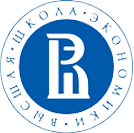Order of the Anti-Corruption Agency and the Ministry of Justice of 31 August No. 3383 “On Approving the Methodology for Detecting and Assessing Corruption Risks in the Activities of Public Authorities and Public Administration Bodies and Other Organisations” (Ўзбекистон Республикаси Коррупцияга қарши курашиш агентлиги ва Адлия вазирлигининг қарори, 31.08.2022 йилда рўйхатдан ўтган, рўйхат рақами 3383) (hereinafter referred to as the Order) was adopted in compliance with Order of the President of the Republic of Uzbekistan of 11 May 2022 No. PP-240 “On the Measures for Improving the Mechanisms of Corruption Risks Mitigation in Public Administration and Enhancing Public Participation in This Area” (Ўзбекистон Республикаси Президентининг қарори, 11.05.2022 йилдаги ПҚ-240-сон, hereinafter, the Order of the President).
Under the Order of the President, the full version of the “E-Anti-Corruption” project is to be launched on 1 September 2022. It provides for the following measures:
- Obligation to detect and assess corruption risks in public bodies (organisations);
- Creation and maintenance of a digital register of relationships vulnerable to corruption;
- Mitigation of corruption risks by improving legislation, reducing human impact, digitalising relevant procedures and functions, insuring transparency, establishing public control etc.
In order to specify the abovementioned requirements, the methodology for detecting and assessing corruption risks was approved. It applies to:
- Public authorities and public administration bodies and their territorial units;
- Public unitary enterprises and entities;
- Organisations with at least 50% of shares owned by the State.
From now on, these bodies (organisations) should:
- Undertake corruption risks analysis under each of their tasks and functions;
- Map corruption risks, including description and degree of corruption risks detected under each task and function, measures for mitigating them, and compile the list of positions vulnerable to corruption.
Assessment of corruption risks should be conducted annually. It will be undertaken by internal anti-corruption control units with the participation of heads of divisions or, if there are no such structures in the body (organisation), of ad hoc working groups whose composition is defined by the heads of structural divisions.
Assessment of corruption risks is concluded with the creation of a corruption risks map of each public body (organisation) which should be published on the “E-anticor.uz” digital platform by 1 February and regularly updated. Based on the corruption risks map of bodies, the Anti-Corruption Agency (Коррупцияга қарши курашиш агентлиги) should create and maintain an open digital register of relationships vulnerable to corruption.
Methodology for detecting and assessing corruption risks
According to the Order, corruption risks will be assessed based on the information received from:
- Internal sources (internal audit materials, protocols of the meetings of ethics commissions, reports on the outcome of monitoring of anti-corruption measures etc.);
- External sources (claims (reports) and statistical data on violations of public bodies’ (organisations’) activities, findings of sociological surveys, materials provided by law enforcement bodies etc.).
In order to detect and assess corruption risks, it is recommended that units (working groups) analyse a number of circumstances, in particular:
- Corruption offences committed by servants (employees) of the body (organisation);
- Additional income received by servants (employees) and the body (organisation) itself in fulfilling public tasks and functions;
- Untimely or unjustifiably fast decision making by servants (employees);
- Insertion of knowingly false information in documents, electronic databases by servants (employees);
- Servants’ (employees’) being in conflict-of-interest situations in fulfilling their professional functions;
- Favouritism, patronage and similar practices in the body (organisation).
Assessment of corruption risks has three categories:
- High-degree risk;
- Middle-degree risk;
- Low-degree risk.
The assignment of each degree will be based on 15 criteria, such as:
- Lack of automaticity and regulation in a body’s (organisation’s) fulfilling their tasks and functions;
- Participation of no more than persons in the decision making process concerning the fulfilment by the body of its tasks and functions;
- Lack of direct contact with natural and legal persons interacting with the body (organisation);
- Commission of offences by servants (employees) in the exercise of their functions.

